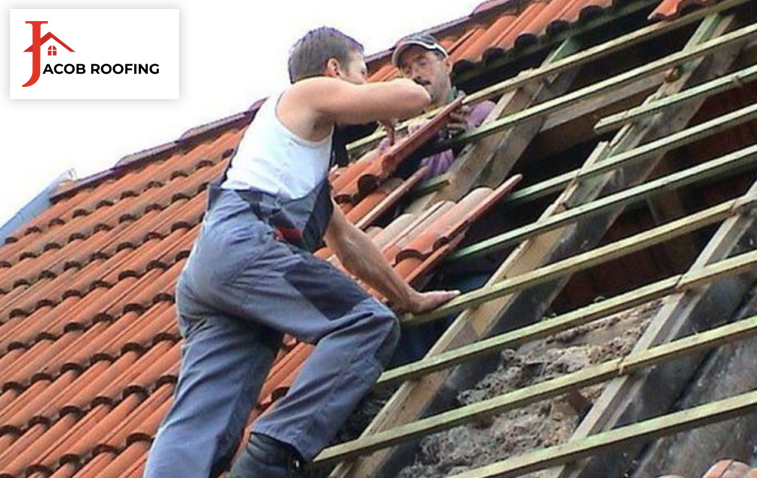The Important Components of the Residential Roofing in Orange
When you are looking to work on your residential roofing in Orange, you need to be aware of the important components that work together to provide a durable and functional roofing system. Here are some key components

Roofing Material
The choice of roofing material is crucial in determining the performance and appearance of the roof. Common options include asphalt shingles, metal, tile, slate, or wood shakes, each with its own advantages in terms of durability, aesthetics, and cost.
Roof Structure
The roof structure includes trusses, beams, and rafters that provide support and stability. It should be designed to withstand the weight of the roofing materials, as well as snow loads, wind loads, and other environmental factors.
Roof Decking
The roof decking, typically made of plywood or oriented strand board (OSB), is the base layer that covers the roof structure. It provides a solid surface for attaching the roofing materials and contributes to the overall strength and stability of the roof.
Underlayment
The underlayment is a waterproof barrier that is installed over the roof decking before the final roofing material. It helps to protect the roof from water infiltration and provides an extra layer of defense against leaks.
Flashing
Flashing is used to prevent water penetration at vulnerable areas such as roof valleys, chimneys, skylights, and roof edges. It is typically made of metal or other waterproof materials and is strategically installed to direct water away from critical areas.
Ventilation
Proper roof ventilation is essential for maintaining a healthy and energy-efficient home. It allows for the circulation of air, preventing moisture buildup, reducing heat buildup in the attic, and prolonging the life of the roofing materials
Gutters and Downspouts
Gutters and downspouts are responsible for collecting and directing rainwater away from the roof and foundation of the house. They play a crucial role in preventing water damage to the roof, walls, and landscaping.
The Different Roofing Materials
Here’s a table comparing different residential roofing materials, their advantages, and average lifespan
| Roofing Material | Advantages | Average Lifespan |
|---|---|---|
| Asphalt Shingles | Affordable, widely available, easy installation, various styles | 20-30 years |
| Metal | Durable, fire-resistant, lightweight, energy-efficient | 40-70 years |
| Wood Shake/Shingles | Natural appearance, good insulation, eco-friendly | 20-40 years |
| Slate | Elegant, long-lasting, fire-resistant, low maintenance | 50-100+ years |
| Clay/Concrete Tile | Stylish, durable, fire-resistant, good insulation | 50-100+ years |
| Synthetic Roofing | Versatile, lightweight, mimic other materials, low maintenance | 30-50 years |
Title 24, Part 2 of the California Building Code
The California Building Code (CBC) contains regulations and standards pertaining to various aspects of construction, including roofing. The specific requirements for roofing in California are outlined in Title 24, Part 2 of the California Code of Regulations. Here are some key provisions related to roofing in the CBC:

Roofing Materials
The CBC specifies the types of roofing materials that can be used based on factors such as fire resistance, weather resistance, and durability. It provides guidelines for the installation and performance of roofing materials, including asphalt shingles, metal roofing, tile, and other approved materials.
Roof Slope and Drainage
The CBC sets requirements for the minimum slope or pitch of roofs based on the type of roofing material used. It also addresses proper roof drainage, including the installation of gutters, downspouts, and proper routing of rainwater away from the building.
Roof Insulation and Energy Efficiency
The CBC includes provisions for roof insulation and energy efficiency to promote energy conservation. It sets requirements for the minimum thermal resistance (R-value) of insulation materials used in roof assemblies.
Roof Ventilation
Proper roof ventilation is important for controlling moisture, preventing condensation, and maintaining a healthy living environment. The CBC specifies requirements for roof ventilation, including the provision of intake and exhaust vents based on the size and design of the roof.
Roof Access and Safety
The CBC addresses requirements for safe roof access and maintenance. It includes provisions for the design and installation of roof access points, such as roof hatches, ladders, and guardrails, to ensure the safety of workers and maintenance personnel.
Orange County Municipal Code
The Orange County Municipal Code contains regulations that govern various aspects of construction, including roofing, within the jurisdiction of Orange County, California. However, the specific provisions related to roofing in the Orange County Municipal Code may vary and can be subject to updates or amendments. Jacob Roofing has all your answers, get in touch today to know more.
